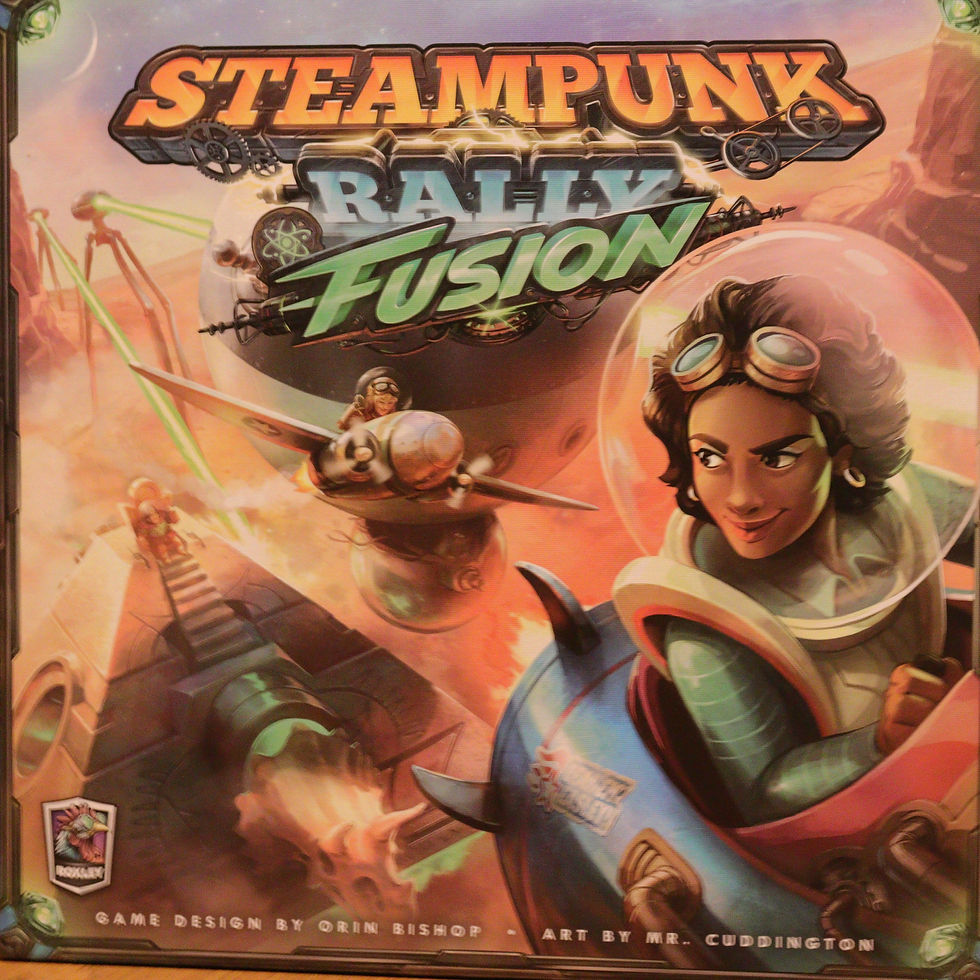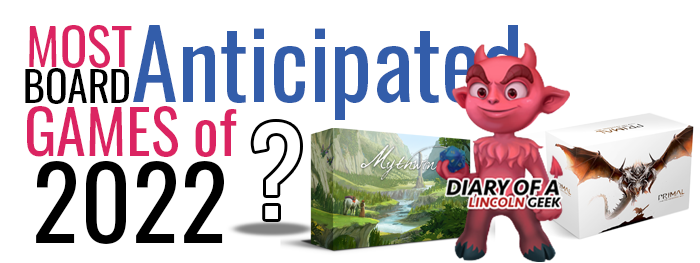The journey to type III, with Solar 175
- George E Ohh

- Feb 25, 2022
- 6 min read
Updated: Jan 15, 2024
Today we're going to be talking about Solar 175, an exciting new legacy game from Cogito Ergo Meeple, who are expecting to launch their Kickstarter campaign on 1st March 2022. In the meantime, we've been fortunate enough to get it for preview on Table Top Simulator.
Is this the next big box game you need to back?

Players: 1-5 | Ages: 14+ | Game Time: 60 mins* |

Thanks to the folks at Cogito Ergo Meeple for the early access, and for sharing your gorgeous artwork and game images.
We look forward to receiving a copy when you get backed!
Summary
Solar 175 designed by Madeline and Joseph Adams is a legacy game set in a prosperous expanding solar system, 175 years after the unspeakable war. It has a rich narrative history that you will influence and develop as you play through your campaign.

It focuses on common Eurogame principles, with worker placement, area-control and bag-building as its key mechanics. It's rich in its strategy, not only in each game, but over the campaign as a whole. Which is only deepened with the end-game scoring system changing based on how you, the players, interact with the game-world.
Can you complete the campaign and usher in a new age of humanity as a type III civilisation?
Gameplay
Each game of Solar 175 is played over a number of rounds made up of three phases, some of which are played simultaneously, and one main action phase where actions are completed one at a time in turn order. You will build you corporation by hiring more workers and completing tasks to spread your influence through the solar system, which the principal objective of each game being to build a new megastructure.
The three phases of game-play are:
Draw - Players will simultaneously draw worker tokens at random from their worker bag until they have filled their available worker slots. If your bag runs out, then refill it with all the worker tokens on your city leave card.
Assign - This phase is conducted simultaneously and is where you assign your available workers to actions in your player area. You do not need to completely assign all the required workers for an action and can build to completing it over several rounds.
Action - Players take it in turns, going clockwise from this round's first player, to complete one action until there are no more actions available to complete this round.
If the end-game trigger hasn't been met by this point, you start a new round and move the first player token to the player on your left.
While it seems simple, that's because it is. Draw workers, play them and resolve them... but as always the devil is in the detail, as there are lots of actions available, most of which interact with one or more aspects of the game but these can be broadly sorted into a few categories:
General - These tend to be simple one-off actions and require very few workers but will offer no bonuses.
Trade - Actions which interact with one of the cards in the trade row, mainly used for gaining money and building bases in the early games, but with many more options unlocked through the campaign.
Hiring - Adding a new worker to your supply by placing it on your city leave card initially. These actions usually provide a bonus general action.
Removal - Sending your workers away: to influence government by casting votes, throwing their bodies into the machines of industry, by supporting the construction of the megastructure or just conscripting the latest batch of soldiers into the military.
The endgame is triggered once at least one player has built all their orbitals. Once this has been done, you finish the current round and then you move into the endgame proceedings.
There are victory points for basically every aspect of the game
The endgame starts with an election, where all the votes are counted and the party with the most votes is elected. Don't underestimate the importance of voting, as the party in power at the end of the game can dramatically affect the final score, as they will double one of the aspects of scoring depending on their preference.
Following the election, you score victory points and record the results on the campaign tracker on the back of you corporation board and in the magazine. There are victory points for basically every aspect of the game, but some are better than others and I'll leave you to find out which for yourself.
You've not told me to rip anything up yet?
So that's one game sorted, but I hear you ask "How is this a legacy game? You've not told me to rip anything up yet?" That's right the legacy aspect of this game is a little different than most and focuses on adding to the game by building depth within the game-world as you advance in the campaign. This could be from game winners naming settlements or unlocking new abilities/game effects as certain campaign events are completed, whether this be from simply completing a megastructure or... [SPOILERS]
For me the campaign is where Solar 175 really comes to life, as while each game can be a little stale and repetitive the campaign and long term strategic planning makes your decisions all the more impactful; it's not just about this game anymore and maybe that low scoring element from your first game now needs to be your greatest priority.
Don't worry about needing the same group each time either, as the overall campaign score is your average campaign points earned rather than your aggregate, meaning players can dip in and out of this immense 100+ hour campaign.
Finally, there is the option of solo play with the use of AI controlled players who will develop their corporation using one of the three different action cards each turn to identify what their workers will do. This can also be used to add additional players if you are running on lower player counts.
My experience was that you really need at least three players to get the most out of the game.
Production
Okay so you know the drill by now that as with any preview copy (and especially where it is on Table Top Simulator), there is not much we can meaningfully talk about from a production perspective at this point...
That being said, there are a few things I would like to mention!
Firstly, the graphics are awesome but a little confused at times, really not sure if this is just pre-production placeholders or indicative of the final product. So what do I mean here? Well, specifically, the general theme is a corporate dystopia and most of the artwork seems to support the gritty cyber-noir theme, but then there are little bits that just don't quite mesh, like the cartoon AI interface graphics in the rulebook and the clip-art style logos and text on various cards and even in the magazine...
So I just mentioned the magazine, and for good reason. It is a brilliant addition to the game, and really helps sell the world-building by offering little titbits of lore and context of how the abstract game pieces fit into the game-world, as well as also acting as a global scorecard for the campaign.
My only other comment so far, and this has the massive statement that I know it's most definitely a work in progress, but it needs to be said that the rulebook can be difficult to understand at first with key information hiding in the sidebars where you don't intuitively look and which traditionally would be reserved for bonus information or worked examples.
Conclusion
You realistically need at least three active players, even if some of these are filled by AI players. Otherwise while there is lots of stuff to do, it just seems to be a grind getting to the endgame, maybe there could be a variable game length by adjusting the number of orbitals?
With the same level of components each game it can lead to early games in the campaign getting quite crowded having not yet unlocked the additional locations/actions and while there are many ways to score they are far from equal as you will quickly learn...
The big redeeming feature of the game is the campaign and the depth of strategy that brings, but in an individual game the options are not as diverse as it seems and you have little replayability without unlocking more stuff from the campaign.

Finally, while the rules are pretty intuitive, they are not easy to follow for a first timer, with lots of moving parts you need to keep track of.
Overall, a solid game for gamers, but not one for the feint of heart.
Your friendly DoaLG rules lawyer
George E Ohh




































Comments